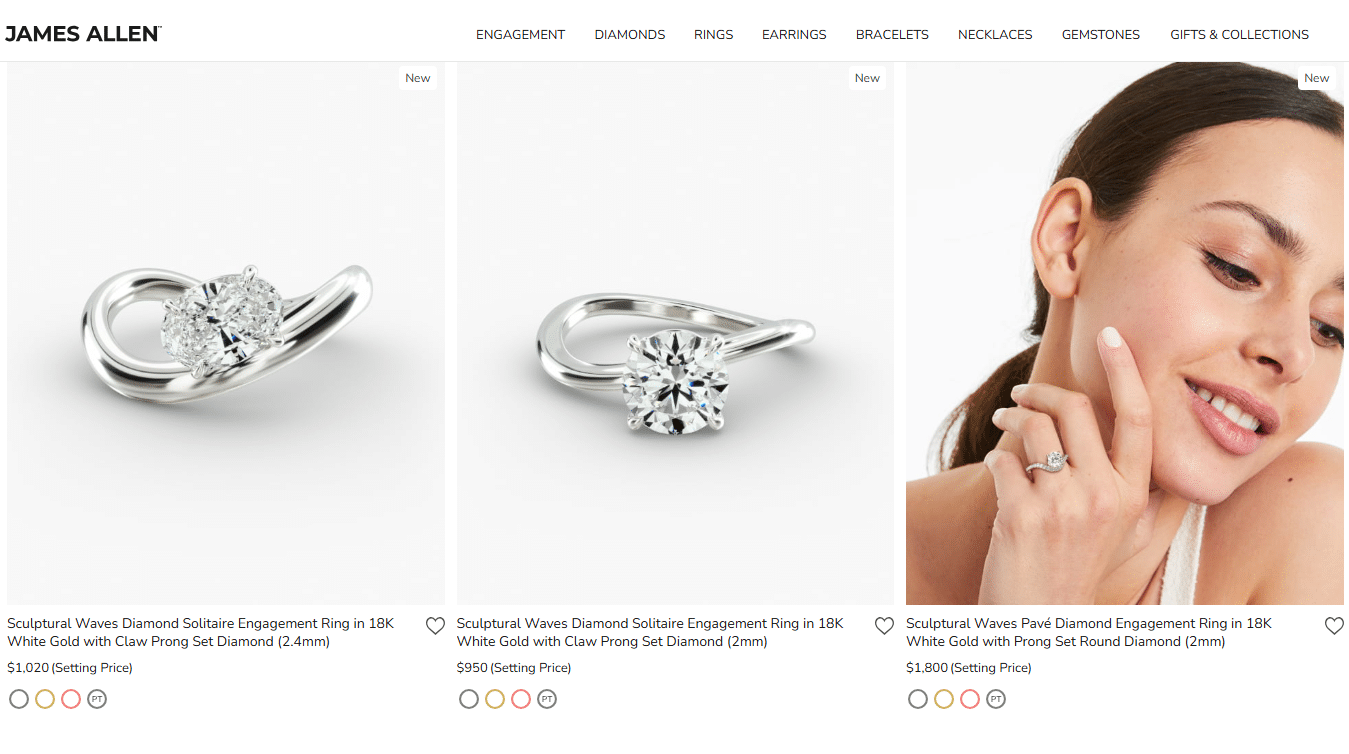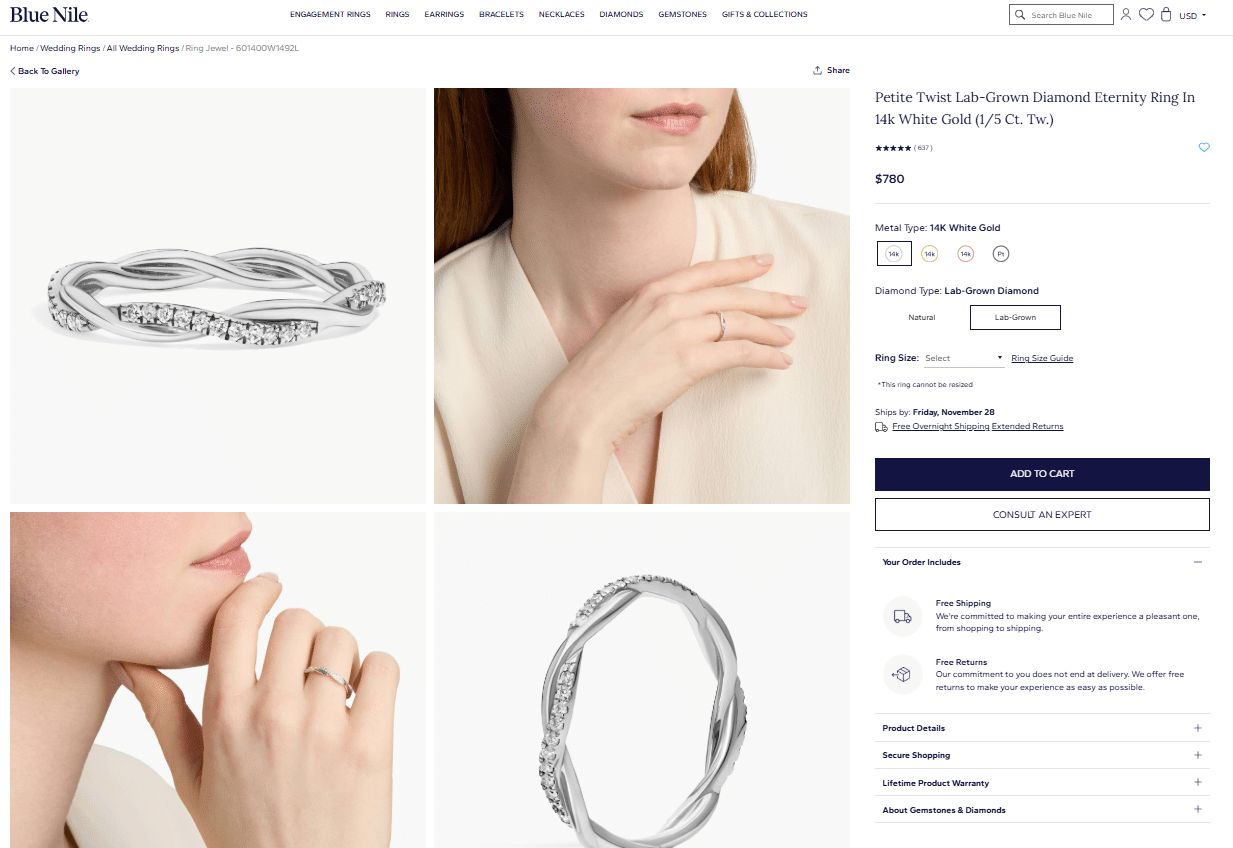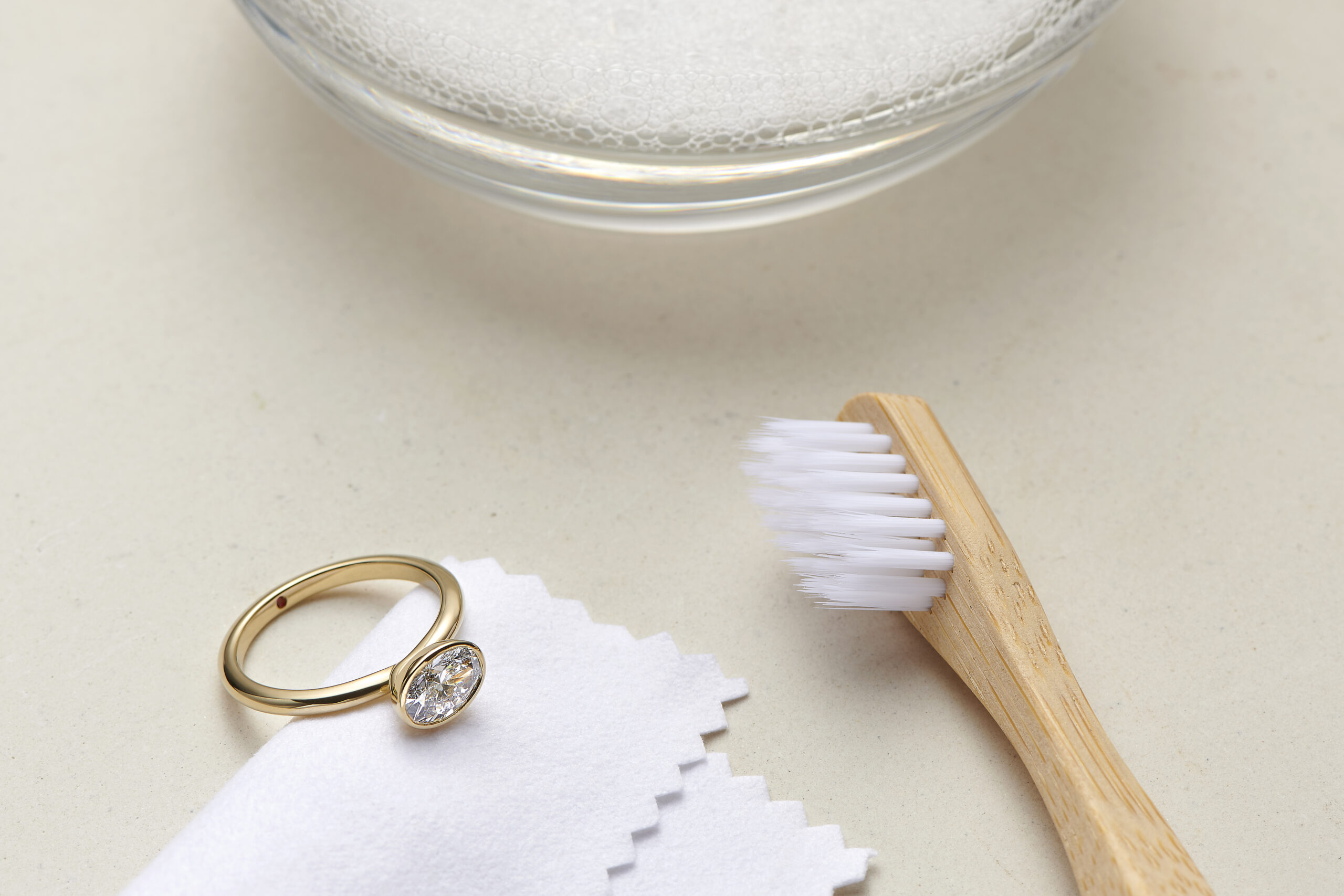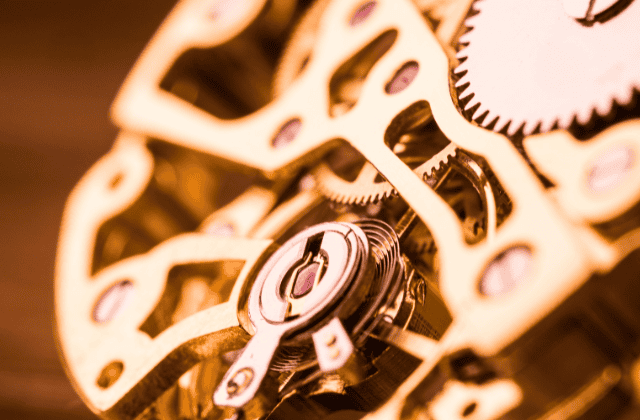Lab Grown vs Natural Diamond: Which One Is Better for You?
Wondering which is better — lab grown vs natural diamond?
You’re in the right place.
In this Learning Guide, we’ll explore everything you need to know about lab grown vs natural diamond — including how they’re made, what sets them apart, and how they compare in value, beauty, and ethics.

Quick Overview of What We’ll Cover
By the end, you’ll understand:
What’s the difference between lab grown vs natural diamond?
Are lab created diamonds real diamonds?
Are lab grown diamonds graded the same way?
Are all natural diamonds conflict-free?
Lab Grown vs Natural Diamond: Origin and Formation
What Are Lab Grown Diamonds?
When you first learn about lab grown vs natural diamond, it’s surprising to know that lab grown diamonds have existed since the 1950s.
However, they’ve only gained major popularity in the last two decades — especially among eco-conscious jewelry buyers who care about sustainability and ethics.
Unlike natural diamonds that take over 3 billion years to form deep within the Earth, lab grown diamonds can be produced in just a few weeks using advanced technology — one of the biggest advantages in the lab grown vs natural diamond discussion.
How Are Lab Created Diamonds Made?
There are two main scientific processes used to create lab grown diamonds — both crucial to understanding the lab grown vs natural diamond debate:
1. High Pressure High Temperature (HPHT)
A small diamond seed is placed inside pure carbon.
Using extremely high pressure and temperature, the carbon crystallizes into a diamond — the same way nature does underground.
This method replicates the natural process almost perfectly, which is why HPHT is often highlighted in lab grown vs natural diamond comparisons.
2. Chemical Vapor Deposition (CVD)
In this process, a diamond seed is placed in a vacuum chamber filled with carbon-rich gases (such as methane).
The gases break down and deposit layers of carbon onto the seed, slowly forming a diamond crystal.
This method is known for producing very clean, high-clarity stones that rival mined ones — another win for lab grown vs natural diamond equality.
Real vs Synthetic: Are They the Same?
Both HPHT and CVD processes create real diamonds — with the exact same chemical, optical, and physical properties as natural ones.
That’s why even gemologists often need advanced instruments to tell lab grown vs natural diamond apart.
While there’s some debate in the jewelry community about which process yields the “better” diamond, both methods produce exceptional stones that are visually and structurally identical.
This is what makes the lab grown vs natural diamond comparison so fascinating — one forms naturally beneath the Earth, the other is crafted with precision by human innovation.
Why It Matters
Understanding lab grown vs natural diamond isn’t just about science — it’s about ethics, sustainability, and affordability.
As technology advances, lab grown diamonds continue to offer buyers an opportunity to enjoy the same brilliance and durability as mined stones — often at a lower cost and with a smaller environmental footprint.
Read also: CVD vs HPHT Diamonds
Where Are Lab Grown Diamonds Made?
When comparing lab grown vs natural diamond, one major difference is their origin.
Most lab created diamonds are produced in China and India, with China leading the global market and supplying over half of the world’s lab grown diamonds.
This rapid growth has made these regions the center of innovation in the lab grown vs natural diamond industry.
Natural Diamonds: Earth’s Billion-Year Masterpieces
How Are Natural Diamonds Formed?
Unlike lab grown stones, natural diamonds are formed deep beneath the Earth’s crust over billions of years.
Extreme heat and pressure cause carbon atoms to bond together and crystallize into rough diamonds.
Eventually, volcanic eruptions push these diamonds closer to the surface, where they can be mined and polished for jewelry.
Diamond Mining Methods
There are several ways to extract earth-mined diamonds, including:
Open-pit mining: Large trucks excavate near the surface to separate diamonds from ore.
Hard rock mining: Machinery and tools extract diamonds from deeper underground deposits.
Block caving: Tunnels are blasted underground so diamond-bearing ore can be brought to the surface.
Before the ideal cut diamond was developed in the 1970s, most fine jewelry featured colored gemstones. Once precision cutting techniques emerged, natural diamonds quickly became the world’s most desired gemstone — a key factor in the ongoing lab grown vs natural diamond discussion.
Where Do Natural Diamonds Come From?
Natural diamonds are mined from several countries, including:
Botswana, Russia, Canada, India, China, various regions of Africa, and the United States.
These sources supply the majority of the world’s natural diamonds, while the lab grown vs natural diamond market continues to evolve as technology advances.
Inside India’s Lab Grown Diamond Industry :
India has become one of the world’s biggest hubs in the lab grown vs natural diamond market — producing more than half of all lab created diamonds sold globally.
In cities like Surat, skilled craftsmen and advanced technology come together to create diamonds that look and sparkle just like natural ones.
This BBC News report takes you inside the busy streets and workshops at the heart of India’s lab grown diamond trade — showing how innovation, affordability, and sustainability are reshaping the global jewelry industry.
Are Lab Grown Diamonds Real Diamonds?
Absolutely — lab grown diamonds are real diamonds.
They share the same crystal structure, chemical composition, and brilliance as natural diamonds. Even professional gemologists often need specialized equipment to tell lab grown vs natural diamond apart.
They’re also graded by the same gemological labs (such as GIA and IGI) using the same 4Cs system — cut, color, clarity, and carat weight.
The Ethical & Environmental Difference
One of the biggest advantages of lab grown diamonds is their ethical and environmental impact.
Unlike mined diamonds, they are:
Conflict-free
More sustainable
Less damaging to the environment
Because they require no destructive mining, lab grown diamonds leave a much smaller carbon footprint, making them the eco-friendly choice for modern engagement rings and a key highlight in the lab grown vs natural diamond comparison.
at James Allen, you can easily find stunning lab grown diamond necklaces for under $500
Lab Grown vs Natural Diamond: Appearance & Visual Differences
When it comes to appearance, lab grown vs natural diamond differences are almost impossible to spot with the naked eye.
Both can be colorless, near-colorless, or show a faint yellow tint, and each is available in fancy colored varieties such as pink, blue, or yellow.
However, when examined under magnification or gemological grading tools, subtle distinctions appear between lab created diamonds and earth-mined diamonds.
Clarity: Which One Looks Cleaner?
If you placed a handful of SI2 clarity lab grown diamonds beside SI2 natural diamonds, you’d likely notice that lab created diamonds tend to appear more eye-clean overall.
That’s because natural diamonds form deep within the Earth, where they’re exposed to other minerals and impurities over billions of years. These natural conditions lead to inclusions and blemishes — tiny internal marks that affect clarity.
In contrast, lab created diamonds form in a controlled laboratory environment, isolated from such impurities.
While they still develop inclusions (often small graphite particles), they’re typically fewer and more visually appealing than those in naturally formed stones.
As a result, lab grown diamonds often have higher clarity grades than their mined counterparts — one of the subtle yet consistent differences in the lab grown vs natural diamond comparison.
Color: Natural Tint vs Lab Tint
Both lab grown and natural diamonds are graded using the same GIA color scale (from D colorless to Z light yellow).
However, lab created diamonds sometimes display a bluish or brownish tint, known as a blue nuance, due to differences in their growth process.
This tint doesn’t impact sparkle or value but can give the diamond a slightly cooler or warmer tone under certain lighting — another small detail in the ongoing lab grown vs natural diamond discussion.
Diamond Simulants and Imitations
It’s easy to confuse lab grown diamonds with diamond simulants, but they are not the same thing.
Lab grown diamonds are real diamonds, made entirely of carbon and sharing the same physical, optical, and chemical structure as mined diamonds.
Simulants, on the other hand, are materials that only look like diamonds, but are made from completely different substances — such as moissanite, cubic zirconia, or white sapphire.
explore natural blue sapphires from Blue Nile
Common Diamond Simulants Compared
| Simulant | Description & Details |
|---|---|
| Moissanite | The most popular diamond alternative, offering nearly identical brilliance and sparkle. Hardness: 9.25 Mohs. Primarily lab-created and commercially available, as natural moissanite is extremely rare. |
| Cubic Zirconia (CZ) | A synthetic gemstone produced affordably in a variety of colors. Hardness: 8–8.5 Mohs. Softer than a diamond and prone to scratching or clouding over time. Offers sparkle but lacks long-term durability. |
| White Sapphire | Found naturally or created in labs, known for its soft silvery shine but limited fire compared to diamonds. Hardness: 9 Mohs. Requires regular cleaning to maintain brilliance and is less reflective than diamonds. |
Moissanite is the closest visual match to a real diamond—whether lab grown or natural—thanks to its high hardness and remarkable brilliance.
Read also: Lab Diamonds vs Diamond Simulants
Certification: How to Make Sure It’s a Real Diamond
When comparing lab grown vs natural diamond, the best way to confirm authenticity is through diamond certification.
A certification report lists your diamond’s cut, color, clarity, and carat weight, proving that the stone is genuine and professionally graded.
However, not all grading labs are equally reliable. Some labs — especially those connected to diamond manufacturers — may have lenient grading standards, which can affect accuracy and value in the lab grown vs natural diamond market.
For Natural Diamonds, Only Trust:
GIA (Gemological Institute of America)
AGS (American Gem Society)
For Lab Created Diamonds, Look For Reports From:
GIA
AGS
IGI (International Gemological Institute)
GCAL (Gem Certification & Assurance Lab)
Read also: What Are The Best Diamond Certifications for Lab Diamonds?
Lab Grown vs Natural Diamond: Price & Value :
When comparing lab grown vs natural diamond, one of the most noticeable differences is the price.
For decades, major diamond corporations like De Beers and Signet Jewelers have marketed the idea that expensive, earth-mined diamonds are the ultimate symbol of love and luxury.
But times have changed — and younger generations aren’t falling for that narrative anymore.
Today’s couples are more practical, ethical, and value-focused. Many see natural diamonds as overpriced and unnecessary, which is why they’re turning to lab created diamonds as a smarter, more affordable alternative.
Why Are Lab Grown Diamonds Cheaper?
A lab grown diamond typically costs 20–30% less than a mined diamond of the same grade and quality.
In some cases — especially compared to traditional jewelry stores — the price difference can reach 40–70%.
This significant gap in the lab grown vs natural diamond market isn’t a scam or a marketing trick. It’s all about production efficiency.
The Cost of Creation
Unlike natural diamonds, lab grown diamonds don’t require expensive mining operations, heavy machinery, or dangerous excavation work.
Instead, they’re grown inside advanced laboratory chambers, where a diamond seed is placed under precise conditions of heat and pressure.
Once the process begins, the chamber does all the work — no miners, no explosives, and no costly ore separation.
This makes the entire process faster, safer, and far more cost-effective.
Smaller lab diamonds can be grown in as little as three weeks, while larger carat sizes usually take about a month to complete — another key advantage in the lab grown vs natural diamond comparison.
Why Natural Diamonds Cost More
Natural diamonds take billions of years to form beneath the Earth’s crust.
When they’re mined, they’re mixed with minerals, rocks, and impurities — and not every diamond unearthed is jewelry-grade.
In fact, only about 1 in every 1,000 pounds of mined ore yields a gem-quality diamond.
The rest go to industrial applications, such as cutting tools and drilling equipment.
This natural scarcity — combined with mining expenses, marketing, and luxury branding — pushes the price of natural diamonds significantly higher.
As a result, when it comes to lab grown vs natural diamond pricing, the difference isn’t just a matter of production — it’s a reflection of efficiency, accessibility, and changing consumer values.

Now, let’s see the numbers.
Here’s a 1.5 carat emerald cut lab grown diamond engagement ring from big name retailer, Kay Jewelers. The total weight of the ring is 1 3/4 approximately. The clarity is SI2 and the color grade is F. It comes with an independent certification, unnamed.
Now here’s a similar lab created diamond engagement ring I designed over at online diamond retailer, James Allen. They don’t carry emerald cut diamonds with clarity below VS2, but the other grades are the same.
Even with these small distinctions that should make James Allen’s engagement ring more expensive, it’s still over $500 less expensive than Kay’s. And that’s not even comparing the original price, just the sale price.
Lab grown diamonds are less expensive than natural diamonds of the same grade.
Lab grown diamonds from an online retailer are less expensive than buying at a major corporate jewelry store.
Price Comparison: Natural Diamond vs Lab Grown Diamond Earrings
| Natural Diamond Earrings | Lab Grown Diamond Earrings |
|---|---|
| 0.50 Carat Total Weight — around $1,200–$1,800 | 0.50 Carat Total Weight — around $600–$900 |
| 1.00 Carat Total Weight — around $3,000–$4,500 | 1.00 Carat Total Weight — around $1,200–$2,000 |
| 1.50 Carat Total Weight — around $5,500–$7,000 | 1.50 Carat Total Weight — around $2,500–$3,500 |
| 2.00 Carat Total Weight — around $8,000–$10,000 | 2.00 Carat Total Weight — around $3,500–$5,000 |
| 3.00 Carat Total Weight — around $14,000–$18,000 | 3.00 Carat Total Weight — around $6,000–$8,000 |
| Average Savings: | 40–70% cheaper than natural diamonds |
Lab Grown vs Natural Diamond: Value & Long-Term Worth
At first glance, lab grown vs natural diamond seems like an easy decision — lab created stones are real, stunning, eco-friendly, and significantly more affordable.
However, when it comes to long-term value, the story gets a bit more complex.
Resale Value: What Happens After You Buy
When you buy a natural diamond engagement ring, it typically loses around one-third of its value the moment you leave the store.
That’s the reality of most luxury jewelry — resale prices rarely match the original retail cost.
For lab grown diamonds, resale value is even lower. While you can sell them privately or through online marketplaces, most jewelers and pawn shops don’t accept trade-ins for lab grown diamonds.
The main reason lies in market volatility.
As production methods evolve and new suppliers enter the market, the price of lab created diamonds constantly fluctuates. Jewelers can’t risk buying back stones that may drop in value shortly after.
In comparison, natural diamonds have a more stable secondary market. Many retailers offer trade-in programs, though they often require you to spend twice your original purchase amount to upgrade.
So, in the lab grown vs natural diamond resale comparison, natural diamonds hold a slight edge — though neither option is ideal for short-term profit.
Investment Value: Are Diamonds a Smart Investment?
If lab grown diamonds struggle in resale, it’s natural to assume that natural diamonds perform better as long-term investments — but that’s not always the case.
Here’s the truth: colorless diamonds rarely appreciate in value, no matter their origin.
Whether it’s a mined or man-made stone, a standard white diamond is not considered a strong investment asset.
If you’re serious about investing in diamonds, focus on fancy colored natural diamonds — especially vivid pinks, blues, and greens. These rare hues are limited in supply and can increase in value over time.
The fancy yellow diamond is one exception among more affordable natural stones.
A vivid yellow natural diamond with higher carat weight can be valuable, while light yellow lab grown diamonds offer a similar aesthetic at a fraction of the price — a great example of how lab grown vs natural diamond choices depend on purpose and budget.
Fancy Colored Lab Diamonds: Affordable Luxury
Modern technology now allows jewelers to create lab grown fancy colored diamonds — available in stunning shades of pink, blue, and green.
These stones mimic the beauty of rare natural diamonds but cost significantly less.
This gives consumers the opportunity to own a unique and luxurious gemstone without spending tens of thousands of dollars.
However, even though these colored lab created diamonds are visually captivating, they still lack long-term resale value compared to their natural counterparts.
In short, they’re best appreciated as fashion-forward, ethical, and sustainable jewelry pieces — not financial investments.
Conclusion: Which One Holds More Value?
When comparing lab grown vs natural diamond, it all comes down to your priorities.
💎 Choose lab grown diamonds if you value affordability, sustainability, and modern technology.
💎 Choose natural diamonds if you value heritage, tradition, and long-term recognition of rarity.
Financially, neither guarantees appreciation — but emotionally, both carry timeless beauty.
The real value lies not in resale or investment, but in the story, ethics, and personal meaning behind your choice.
Frequently Asked Questions About Lab Grown vs Natural Diamond
1. Are lab grown diamonds real like natural ones?
Yes — lab grown vs natural diamond comparisons show that both are made of pure carbon and have the same optical, chemical, and physical properties. The only difference is their origin — one is created in a lab, the other deep underground.
2. Why do lab grown diamonds cost less than natural diamonds?
The lab grown vs natural diamond price gap exists because lab diamonds don’t require mining, heavy labor, or expensive logistics. They’re grown in controlled chambers, which makes production faster and more affordable.
3. Do lab grown diamonds hold their value over time?
When it comes to lab grown vs natural diamond resale, natural stones retain slightly more value. Lab diamonds are better seen as ethical luxury, not as financial investments.
4. Which is more ethical — lab grown or natural diamonds?
In the lab grown vs natural diamond ethics debate, lab diamonds clearly win. They are conflict-free, sustainable, and leave a much smaller carbon footprint than mined diamonds.
5. How do I choose between lab grown and natural diamonds?
When deciding on lab grown vs natural diamond, think about what matters most to you:
If you want beauty, quality, and sustainability — go for lab grown.
If you value rarity and tradition — choose natural.
Both will shine for a lifetime; it’s simply about your priorities, not just the price.













